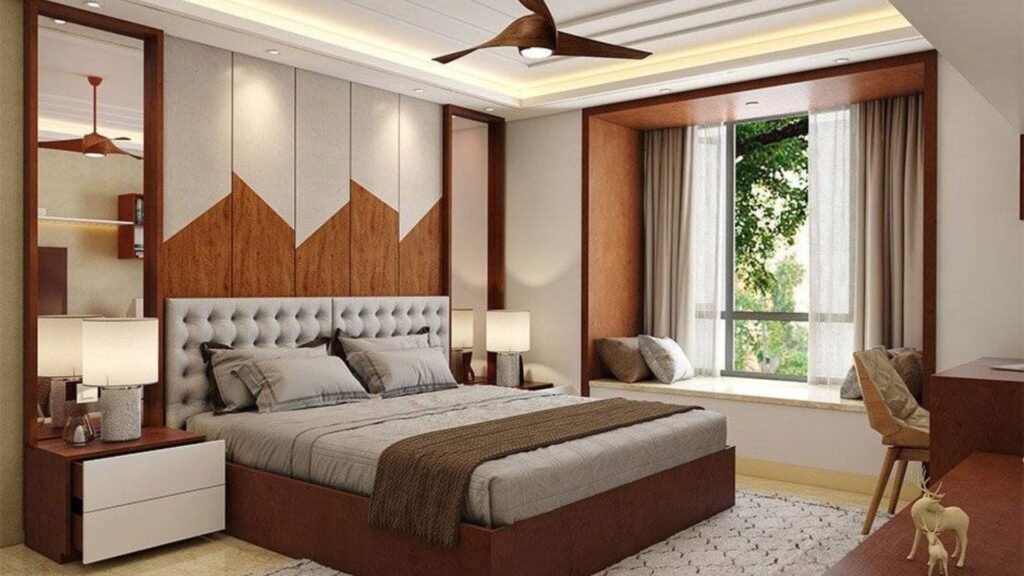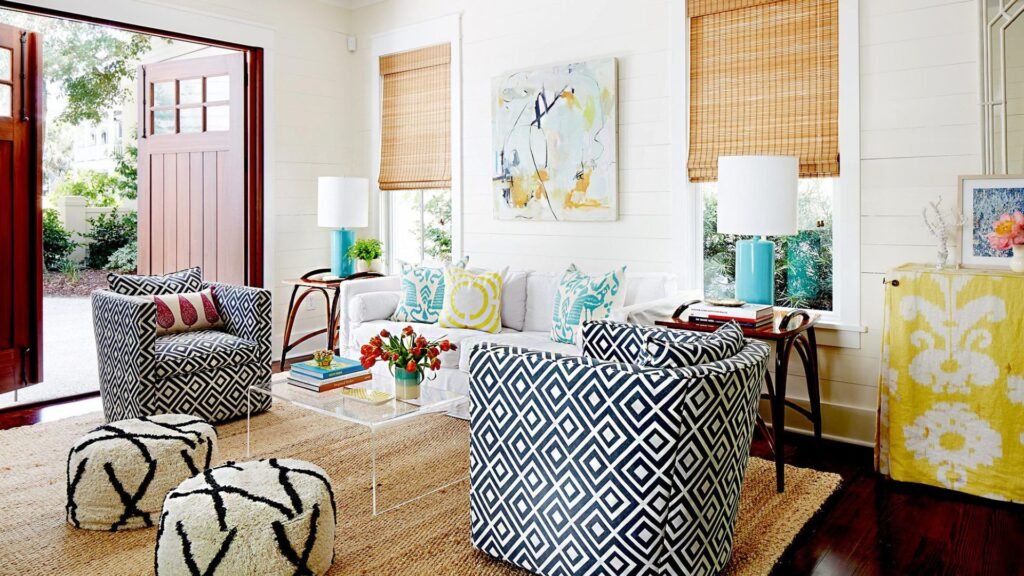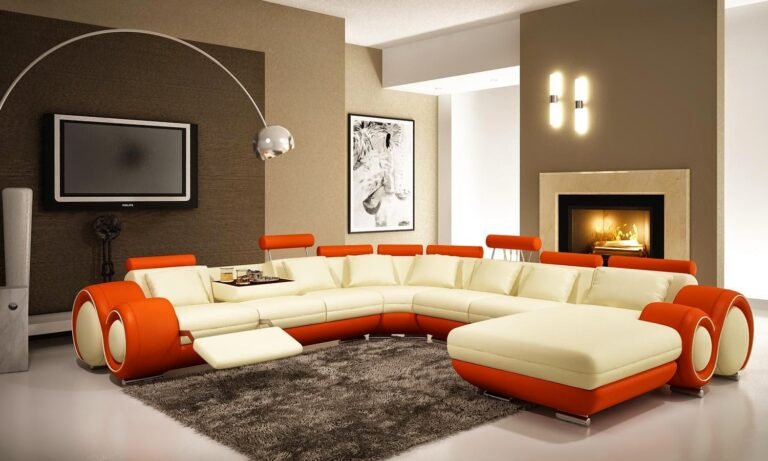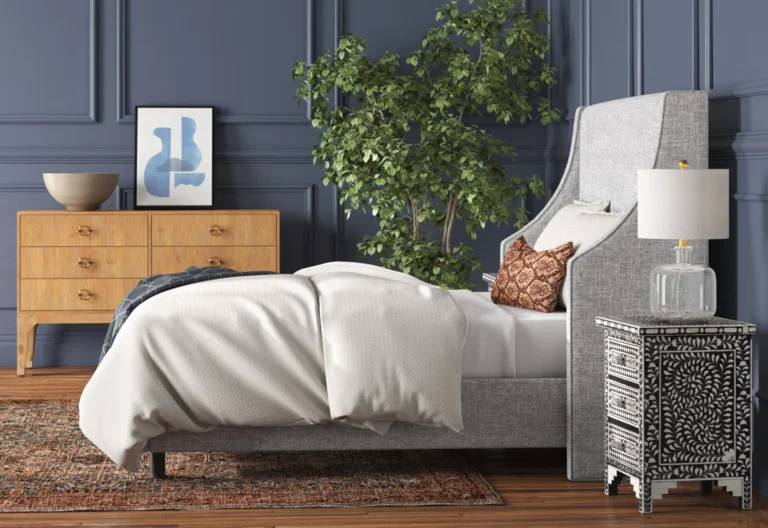
Living in a small space presents unique challenges when it comes to furniture arrangement. With limited square footage, every piece of furniture must serve a purpose, and the layout needs to maximize both function and style. However, small doesn’t have to mean cramped or cluttered. With smart planning and creative solutions, you can make even the tiniest rooms feel spacious, comfortable, and inviting. Here are some tried-and-true interior design tips for arranging furniture in small spaces.

Choose Multi-Functional Furniture
When space is tight, every item should earn its place. Look for furniture that serves more than one purpose, such as:
- Sofa beds or daybeds that provide seating by day and sleeping space by night.
- Ottomans with storage inside for blankets or magazines.
- Extendable dining tables that can expand for guests but remain compact otherwise.
Multi-functional furniture helps reduce clutter while keeping your space adaptable.
Measure Your Space and Furniture
Before buying or arranging furniture, accurate measurements are crucial. This helps ensure pieces fit comfortably without overcrowding.
- Measure your room’s length, width, and ceiling height.
- Consider doorways, windows, and pathways to avoid blocking flow.
- Measure existing furniture or plan to buy pieces scaled appropriately for your space.
Using these measurements, create a floor plan (on paper or with digital tools) to visualize different layouts.
Prioritize Vertical Space
When floor space is limited, think upward.
- Install wall-mounted shelves or cabinets to free up floor area.
- Use tall bookcases or storage units to draw the eye up and create the illusion of height.
- Hang mirrors on walls to reflect light and make the room feel larger.
Vertical storage and décor maximize usability without sacrificing style.
Opt for Smaller-Scale Furniture
Oversized furniture can overwhelm a small room and make it feel cramped.
- Choose pieces with slim profiles, tapered legs, and open bases to create a sense of openness.
- Look for chairs, tables, and sofas designed specifically for compact spaces.
- Transparent or acrylic furniture can also reduce visual clutter.
Smaller furniture pieces maintain comfort while preserving room flow.
Create Zones for Functionality
Even in small spaces, dividing the room into distinct zones helps maximize usability.
- Use rugs or lighting to define areas like a seating nook, workspace, or dining corner.
- Arrange furniture so it supports each zone’s purpose without interference.
- In studio apartments, use room dividers or open shelving to create separation.
Zoning adds structure and makes your space feel organized.
Keep Pathways Clear
Navigability is essential in small spaces.
- Avoid blocking walkways with bulky furniture.
- Leave at least 24-30 inches of clearance for comfortable movement.
- Arrange seating and tables to allow easy access and flow.
Clear pathways prevent the room from feeling cramped and improve functionality.
Use Light Colors and Reflective Surfaces
Color and light have a big impact on the perception of space.
- Light, neutral tones on walls and furniture make rooms feel larger and brighter.
- Incorporate reflective surfaces like glass tabletops, mirrors, or metallic finishes.
- Layer lighting with overhead, task, and accent lights to reduce shadows.
These elements enhance openness and create an airy atmosphere.
Declutter and Choose Quality Over Quantity
Small spaces benefit from minimalism.
- Keep only essential furniture and décor to avoid overcrowding.
- Select high-quality, versatile pieces that serve multiple functions.
- Regularly declutter to maintain an organized and inviting environment.
A clean, simple aesthetic helps a small space feel more spacious.
Use Rugs to Define and Anchor Areas
Area rugs are excellent tools for delineating zones and adding texture.
- Place rugs under seating or dining areas to create visual boundaries.
- Choose rugs proportional to the furniture arrangement—not too large or too small.
- Layer rugs for added dimension and interest.
Rugs bring warmth and cohesion to compact layouts.
Final Thoughts
Arranging furniture in small spaces requires creativity, planning, and thoughtful choices. By prioritizing multi-functional pieces, optimizing vertical space, and maintaining clear pathways, you can create a home that feels roomy, stylish, and comfortable—no matter its size. Remember, the goal is to maximize both function and aesthetic without sacrificing one for the other.







